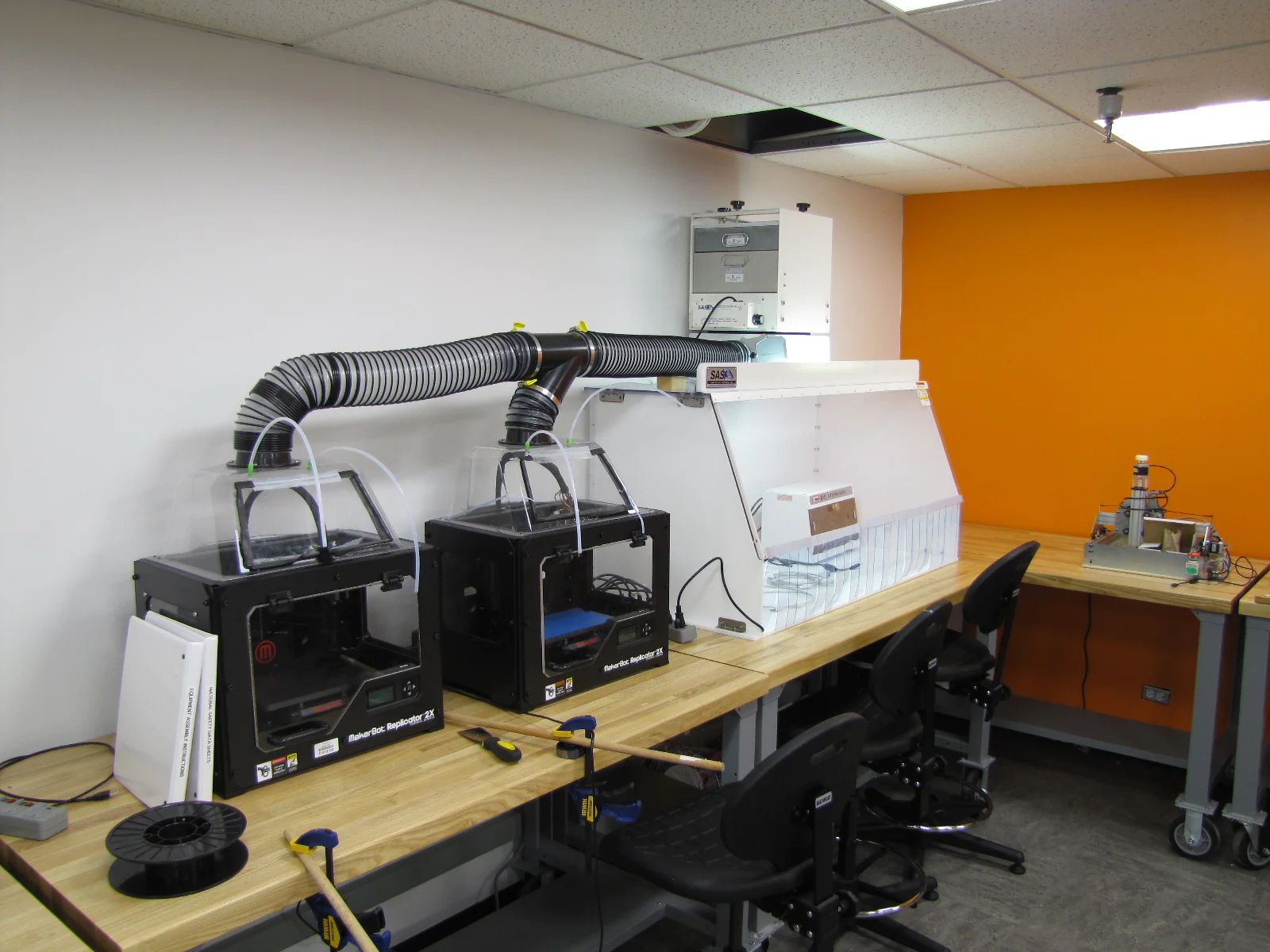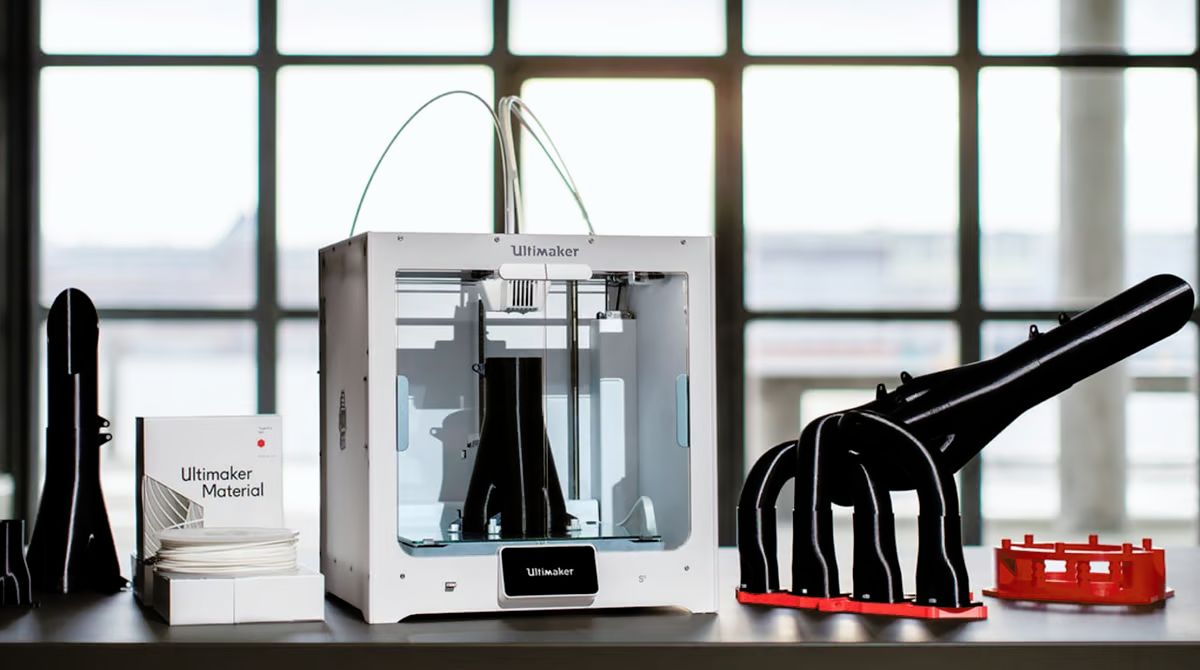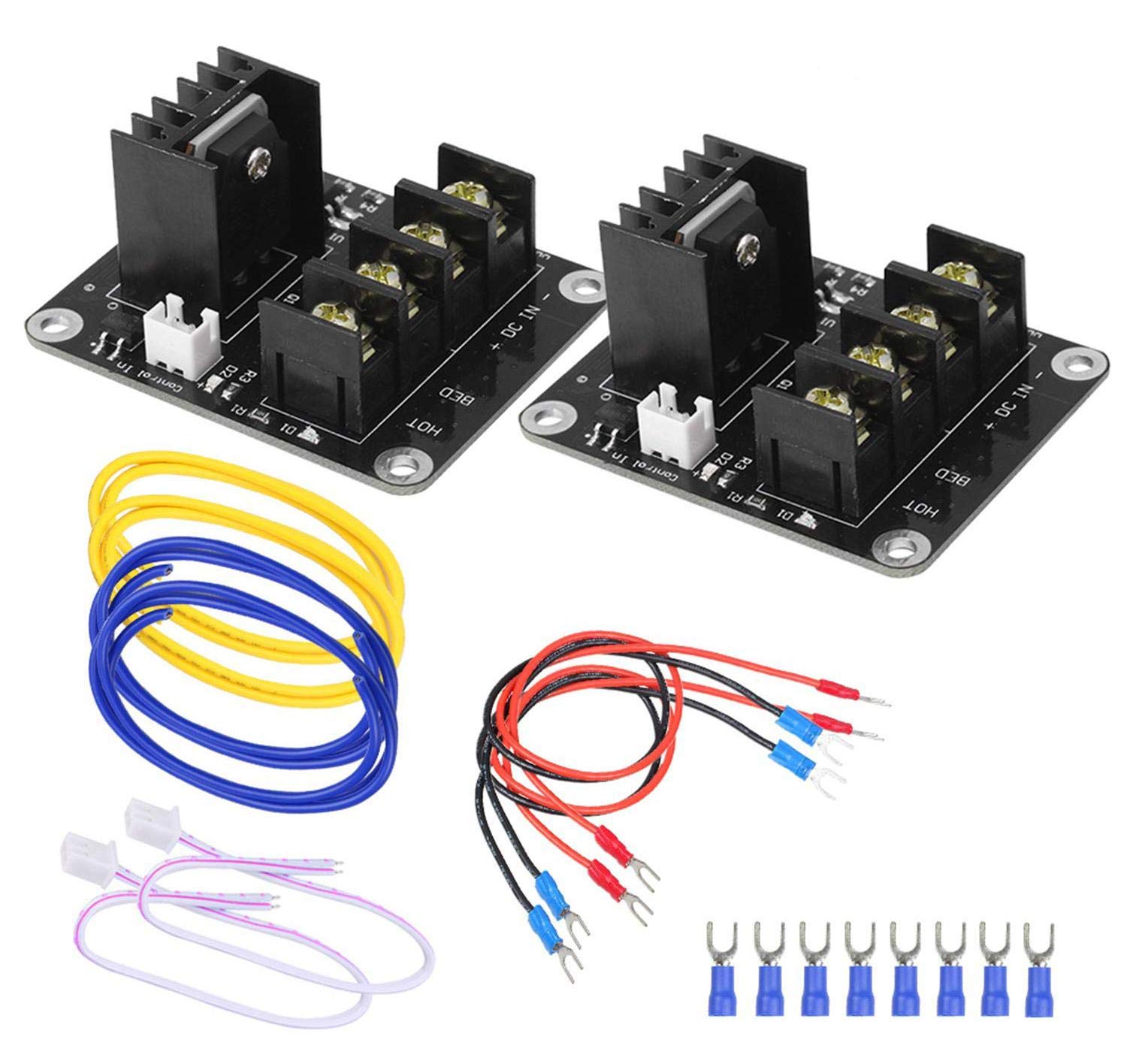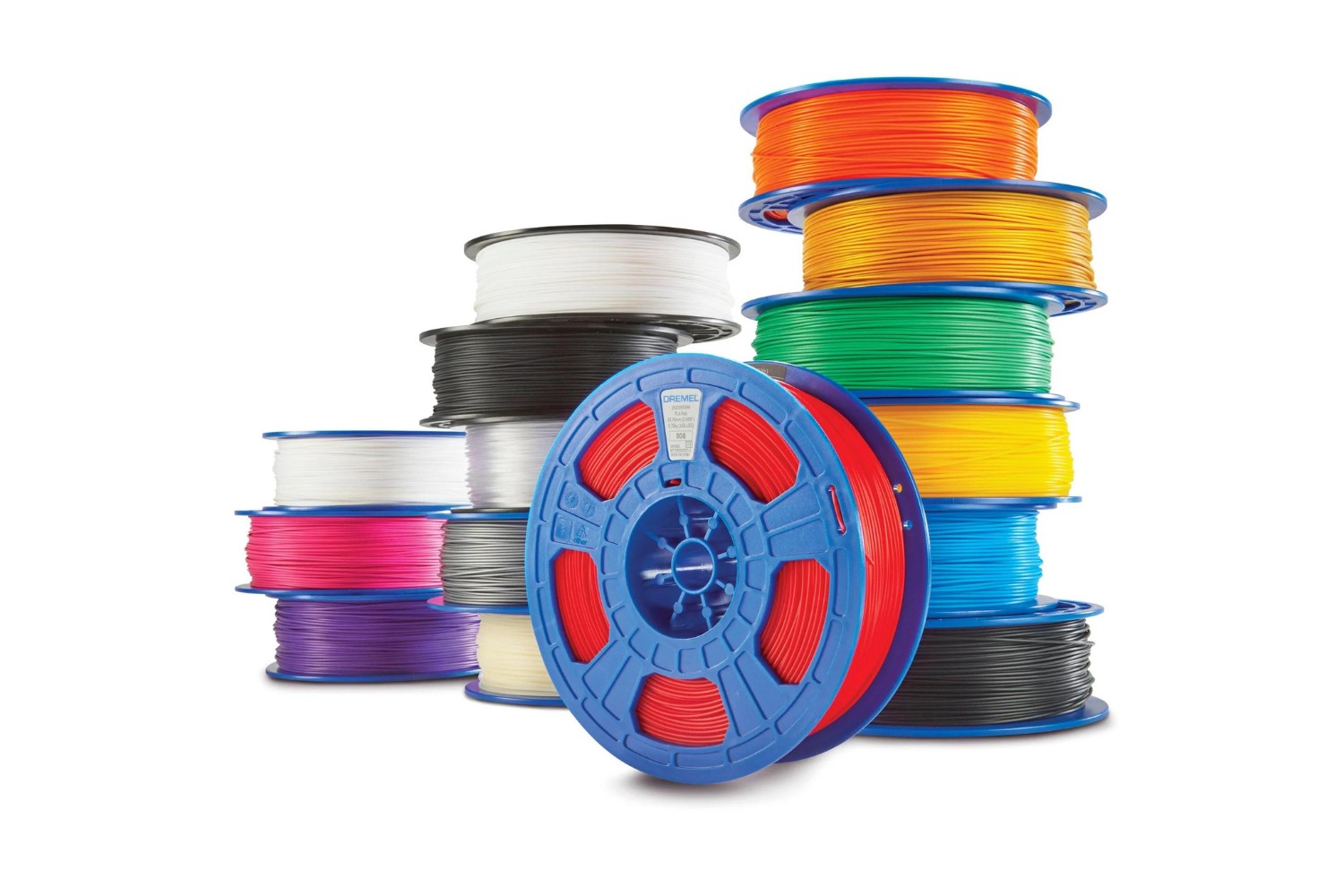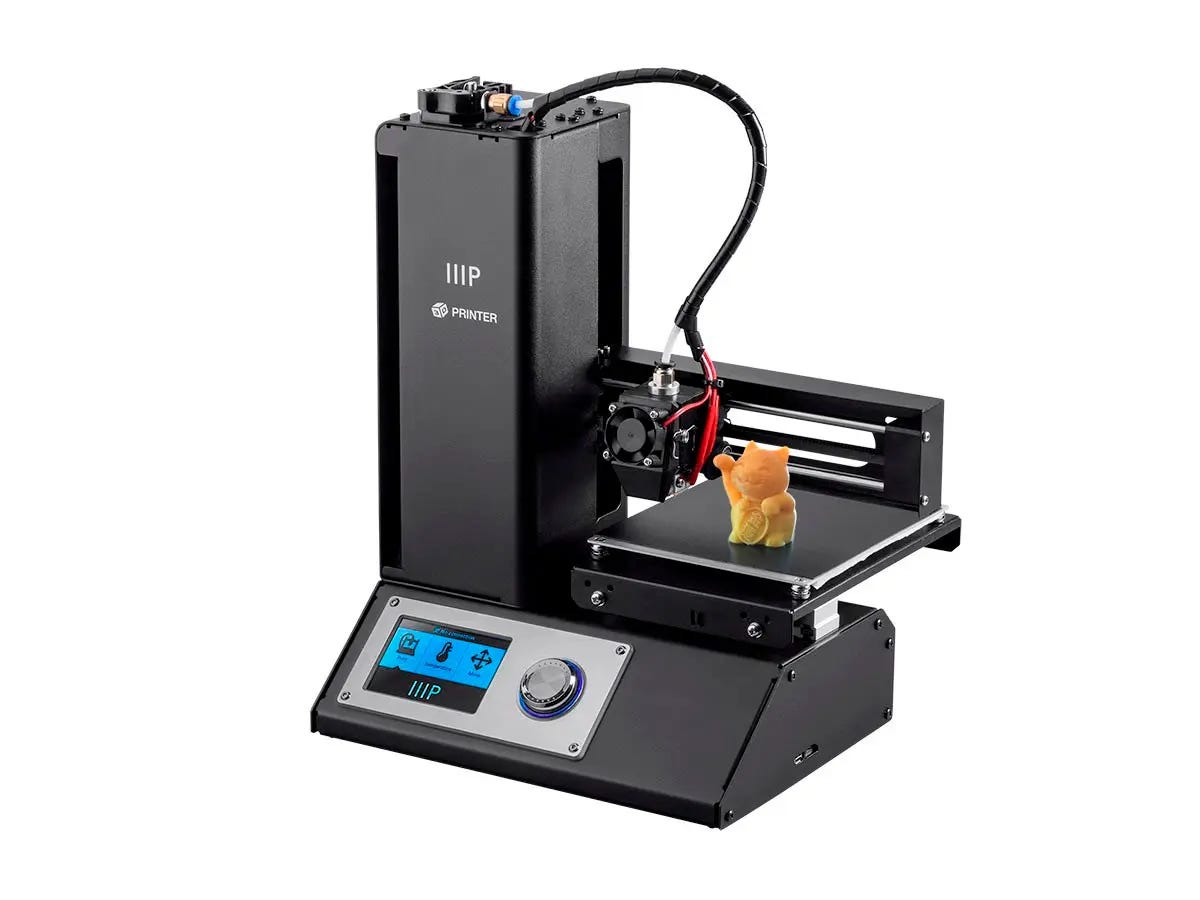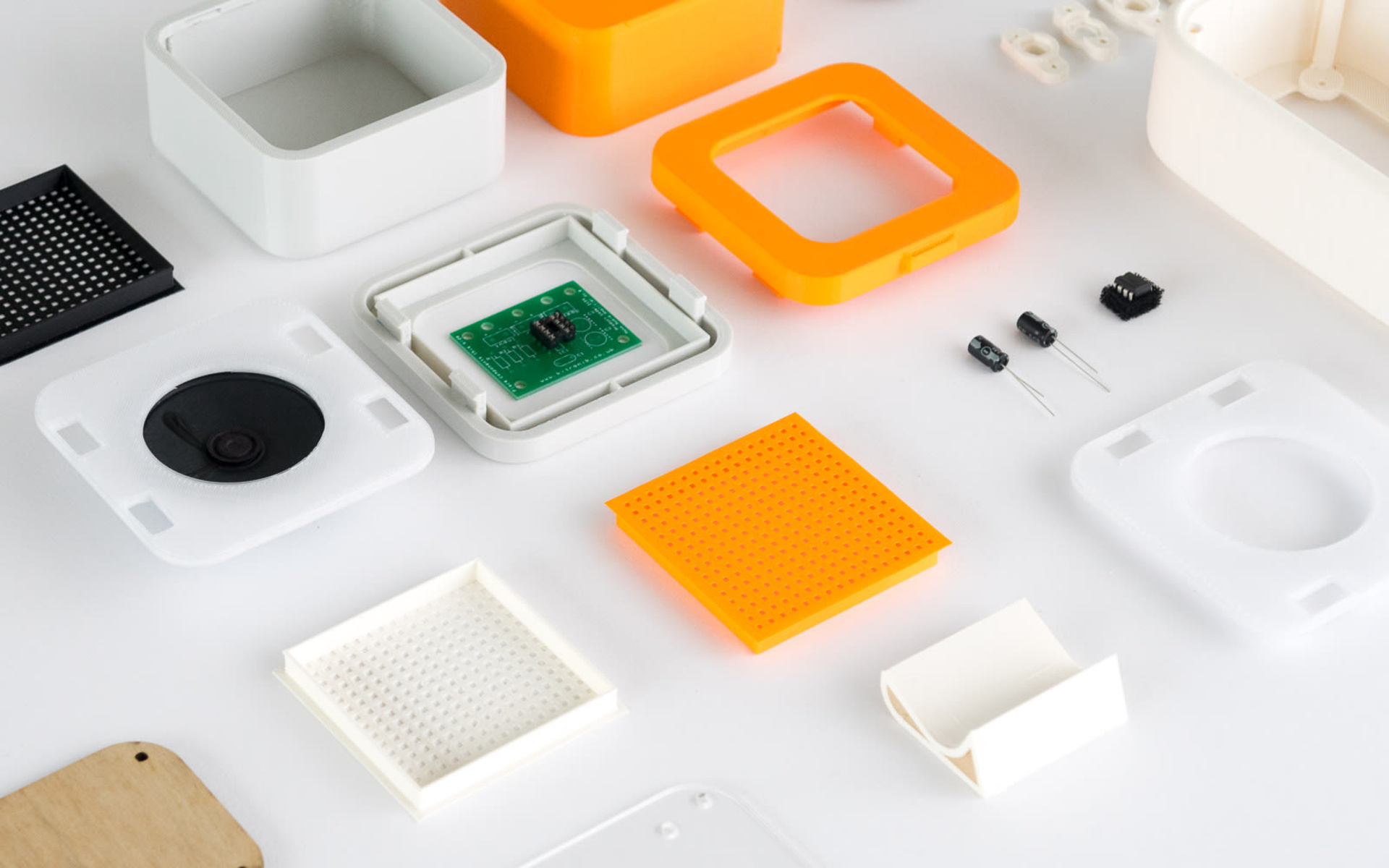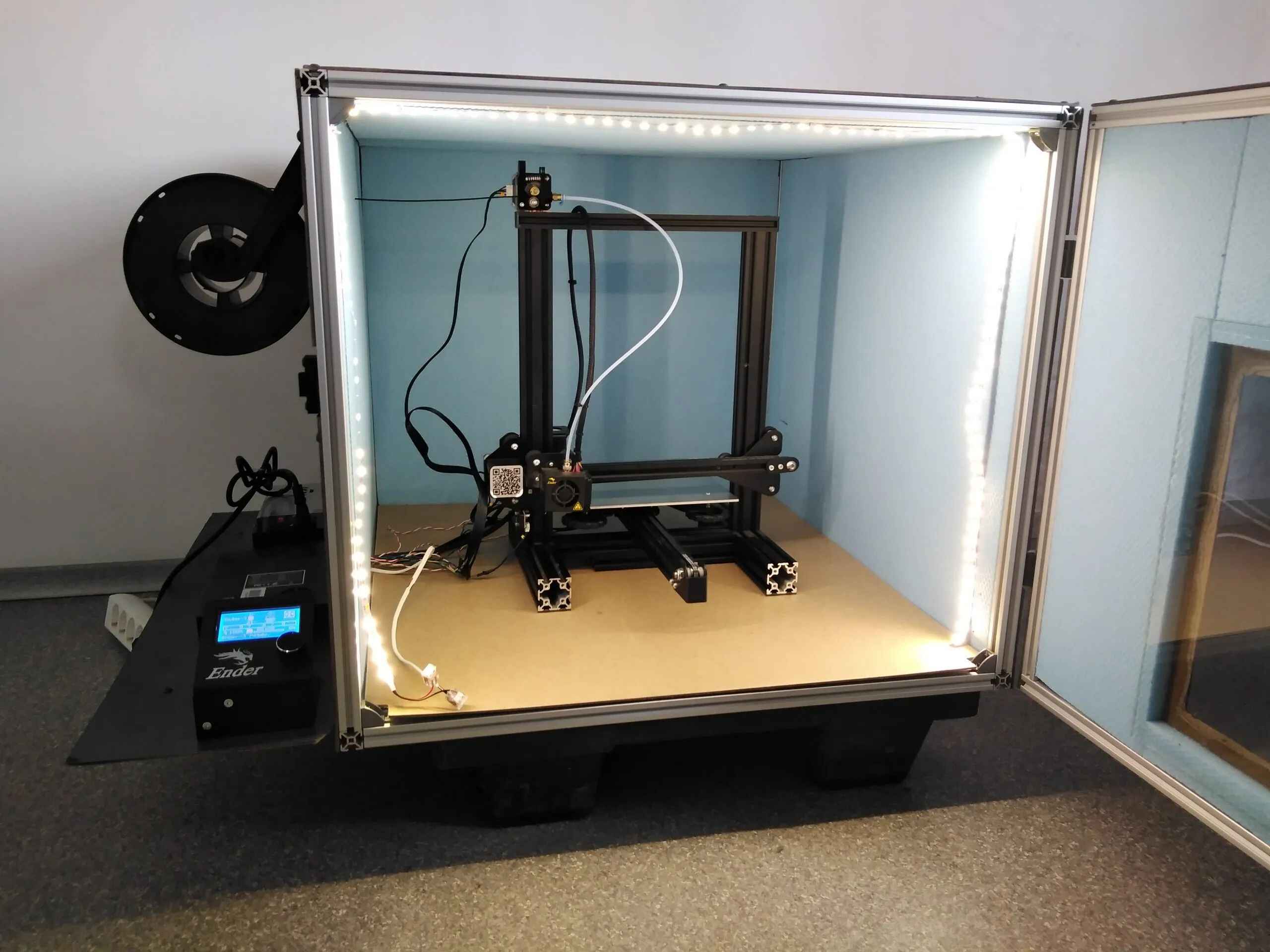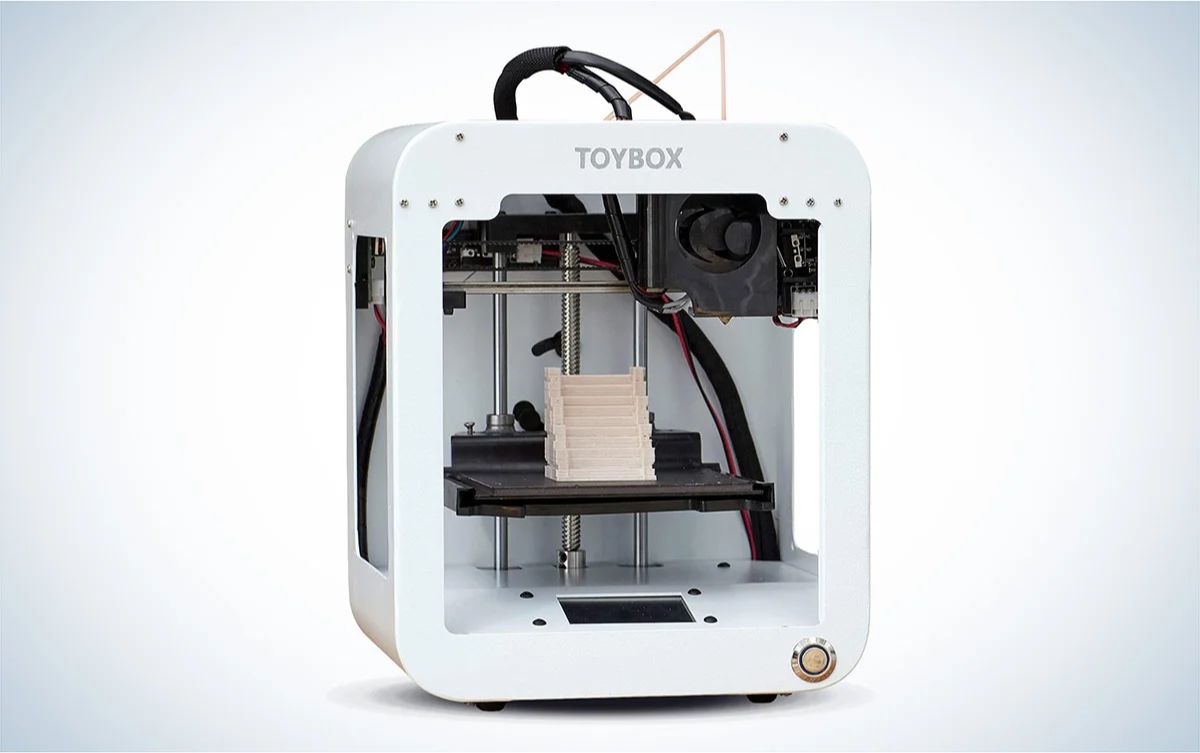Why Ventilation is Important for 3D Printers
When it comes to 3D printing, ensuring proper ventilation is essential. Ventilation plays a crucial role in maintaining a safe and healthy printing environment. Without proper ventilation, harmful fumes and particles emitted during the printing process can accumulate, posing potential risks to both the user and the surrounding area.
One of the main reasons ventilation is important for 3D printers is the type of materials used in the printing process. Many 3D printers use thermoplastics, which release volatile organic compounds (VOCs) and microplastic particles when heated and melted. These emissions can include toxic fumes and ultrafine particles that, when inhaled, can have adverse health effects.
Furthermore, certain filaments used in 3D printing, such as ABS and nylon, release potentially harmful substances like styrene and caprolactam when heated. These emissions can irritate the respiratory system and may cause dizziness, headaches, and other health issues, especially when printing in an enclosed space without proper ventilation.
In addition to safeguarding your health, proper ventilation can also prevent damage to the 3D printer itself. The heat generated during the printing process can build up inside the printer, potentially leading to overheating and component failure. By providing adequate ventilation, you can help dissipate this heat and extend the lifespan of your printer.
Proper ventilation also helps in controlling the temperature and humidity levels within the printing area. Excessive heat and humidity can adversely affect the quality of the prints and may result in warping, cracking, or uneven layer adhesion. Ventilation helps maintain optimal environmental conditions, ensuring consistent and high-quality prints.
Moreover, ventilation aids in reducing unpleasant odors that can be emitted during the printing process. Some filaments, particularly those containing additives or dyes, can produce strong and unpleasant smells. By implementing proper ventilation, you can effectively minimize these odors, making the printing environment more pleasant to work in.
In summary, ventilation is vital for 3D printers due to several key reasons. It helps protect your health by minimizing exposure to toxic fumes and particles, prevents damage to the printer itself by dissipating excess heat, improves print quality by controlling temperature and humidity levels, and reduces unpleasant odors in the printing area. Therefore, it is crucial to prioritize ventilation in your 3D printing setup to create a safe and comfortable working environment.
Understanding the Risks of Inadequate Ventilation
Inadequate ventilation in a 3D printing environment can carry significant risks that cannot be ignored. Without proper airflow and ventilation, the accumulation of harmful fumes, particulate matter, and high temperatures can pose various hazards. It is crucial to be aware of these risks to ensure the safety of both yourself and your surroundings.
One of the primary risks of inadequate ventilation is the exposure to toxic fumes emitted during the printing process. As thermoplastics are heated and melted, they release volatile organic compounds (VOCs) that can have harmful effects on the respiratory system when inhaled. Prolonged exposure to these fumes can result in respiratory irritation, headaches, dizziness, and in severe cases, even organ damage. Proper ventilation helps to remove these toxic fumes from the air, reducing the risk of health complications.
In addition to the release of VOCs, the printing process can also generate a significant amount of ultrafine particles and microplastics. These particles can remain suspended in the air and, when inhaled, can enter the respiratory system and cause respiratory issues. The accumulation of these particles can also lead to the deterioration of indoor air quality, potentially impacting your overall health and well-being. Adequate ventilation helps to eliminate these particles, maintaining a cleaner and healthier air environment.
An insufficiently ventilated 3D printing environment can also lead to elevated temperatures. The printing process generates heat, and without proper ventilation, this heat can build up, potentially resulting in overheating of the printer and its components. Overheating can lead to malfunctions, damage to the printed objects, and even pose a fire risk. It is essential to have adequate airflow to dissipate the heat and maintain a safe operating temperature for the printer.
Another risk of inadequate ventilation is the impact on print quality. High humidity levels caused by poor ventilation can lead to issues such as warping, poor layer adhesion, and inconsistent printing results. Maintaining proper ventilation helps in controlling the temperature and humidity, ensuring optimal conditions for achieving high-quality prints.
Furthermore, an inadequately ventilated printing area can result in the accumulation of unpleasant odors. Some filaments, especially those with additives or dyes, can emit strong and pungent smells during the printing process. These odors can be both distracting and uncomfortable to work in. By implementing effective ventilation, you can minimize the presence of these odors, creating a more pleasant and enjoyable working environment.
Understanding the risks of inadequate ventilation is crucial for any 3D printing enthusiast. By ensuring proper ventilation, you can significantly reduce the exposure to toxic fumes, prevent overheating and component failure, maintain print quality, and create a healthier and more comfortable working environment. Incorporating ventilation measures should be a priority to mitigate these risks and ensure a safe and successful 3D printing experience.
How to Assess Your 3D Printer’s Ventilation Needs
Assessing your 3D printer’s ventilation needs is an essential step in creating a safe and efficient printing environment. By understanding the specific requirements of your printer, you can determine the most suitable ventilation solution to meet those needs. Here are some key factors to consider when assessing your 3D printer’s ventilation requirements:
1. Printer Type and Size: Start by considering the type and size of your 3D printer. Different printers have varying printing capacities and airflow requirements. Larger printers may generate more heat and fumes, necessitating stronger ventilation. Take note of the printer’s dimensions and specifications to gauge the level of ventilation needed.
2. Filament Materials Used: Evaluate the types of filaments you use for your printing projects. As mentioned earlier, different filaments emit various fumes and particles when heated. Some filaments, such as ABS and nylon, release potentially harmful substances. Identify the materials you commonly print with and research their ventilation requirements.
3. Printing Volume and Frequency: Consider the volume and frequency of your printing. If you frequently print large and complex objects or print continuously for extended periods, your ventilation needs will differ from those who print on a smaller scale or infrequently. Higher printing volumes may require more robust ventilation to manage the increased emissions and heat.
4. Printing Environment: Assess the space in which your 3D printer operates. Is it a well-ventilated room, or is it a more confined area? The size and airflow of the room will influence the ventilation requirements. If the printer is located in an enclosed space, you may need to implement additional measures to ensure adequate airflow and ventilation.
5. Local Regulations and Guidelines: Familiarize yourself with any local regulations or guidelines related to 3D printing ventilation. Some regions may have specific requirements or recommendations regarding ventilation standards and air quality control. Ensure compliance with these regulations to maintain a safe and legal printing environment.
6. Safety Considerations: Finally, prioritize safety when assessing your printer’s ventilation needs. Prioritize the well-being of yourself and those around you. Proper ventilation reduces health risks associated with fumes and particles, minimizes the chance of overheating, and mitigates potential fire hazards.
By evaluating these factors, you can determine the appropriate level of ventilation for your 3D printer. This assessment will guide you in selecting the most suitable ventilation options for your specific setup. It is crucial to take the time to assess your printer’s ventilation needs to ensure a safe and optimal printing environment.
Choosing the Right Ventilation Solution for Your 3D Printer
Choosing the right ventilation solution for your 3D printer is essential to maintain a safe and healthy printing environment. There are several options available, each with its pros and cons. Consider the following factors when selecting the ventilation solution that best suits your needs:
1. Ventilation Requirements: Assess your 3D printer’s specific ventilation needs, as discussed in the previous section. Determine the airflow rate required to effectively remove fumes and particles emitted during the printing process. This will help you gauge the capacity and strength required for your ventilation system.
2. Local Exhaust Ventilation (LEV) Systems: Local exhaust ventilation systems, such as fume extractors and ventilated enclosures, are widely used in 3D printing setups. These systems directly capture and remove fumes and particles at the source. Ensure the LEV system is compatible with the size and dimensions of your printer and has sufficient airflow capacity to handle the emissions.
3. Filtration Systems: Consider using filtration systems in conjunction with exhaust ventilation. Filtration systems can trap and remove particulate matter, VOCs, and odors from the air. HEPA filters and activated carbon filters are commonly used in 3D printing environments to improve air quality. Evaluate the efficiency of the filtration system and the ease of maintenance.
4. Enclosures and Hoods: Enclosing the 3D printer or using a hood with an exhaust system can help direct the fumes and particles away from the surrounding area. Enclosures provide added protection by minimizing the risk of accidental contact with hot components while simultaneously improving ventilation efficiency. Ensure the enclosure or hood allows easy access for maintenance and filament changes.
5. Ventilation Placement: Consider the placement of the ventilation system in your workspace. Ideally, the exhaust should be positioned to draw fumes and particles away from you and the surrounding area. It is important to efficiently remove the emissions without obstructing the printer’s operations or causing interference.
6. Noise Levels: Take into account the noise levels generated by the ventilation system. Some systems can be noisy, which may be disruptive or inconvenient if you are working in close proximity to the printer. Look for ventilation solutions that provide a balance between effective airflow and low noise levels.
7. Budget and Space Constraints: Consider your budget and any space limitations when choosing a ventilation solution. Some systems may require additional installation or modifications to the printing area, while others may be plug-and-play. Assess the cost of the system and the space available to ensure it fits within your limitations.
By considering these factors, you can select the ventilation solution that best meets your 3D printer’s needs and your specific requirements. It is essential to invest in a reliable and effective ventilation system to safeguard your health, maintain optimal printing conditions, and create a safe and comfortable working environment.
Step-by-Step Guide to Ventilating Your 3D Printer
Proper ventilation is crucial for maintaining a safe and healthy 3D printing environment. Follow these step-by-step guidelines to effectively ventilate your 3D printer:
Step 1: Assess Your Ventilation Needs – Evaluate your specific printing setup and consider factors such as printer type, filament materials used, printing volume, and the printing environment. This assessment will help you determine the ventilation requirements for your 3D printer.
Step 2: Research Ventilation Solutions – Explore the different ventilation solutions available, such as local exhaust ventilation systems, filtration systems, and enclosures. Research their capabilities, effectiveness, and compatibility with your printer setup.
Step 3: Select the Appropriate Ventilation System – Based on your assessment and research, choose the ventilation system that best suits your needs. Consider factors such as airflow rate, filtration efficiency, noise levels, and budget constraints.
Step 4: Install the Ventilation System – Follow the manufacturer’s instructions to properly install the chosen ventilation system. Ensure that it is securely mounted and properly connected to power and any necessary venting or ducting.
Step 5: Position the Ventilation System – Place the ventilation system in a strategic location near your 3D printer. Position it in a way that allows for efficient airflow and proper removal of fumes and particles emitted during printing. Consult the system’s user manual for specific placement recommendations.
Step 6: Test the Ventilation System – Once installed, test the ventilation system to ensure it is operating correctly. Check for proper airflow, suction, and noise levels. Monitor the system to ensure it effectively captures and removes fumes and particles during printing.
Step 7: Regularly Maintain and Clean the Ventilation System – Maintain your ventilation system by regularly cleaning or replacing filters as necessary. Follow the manufacturer’s instructions regarding maintenance intervals and procedures. This will ensure its optimal performance and efficiency over time.
Step 8: Regularly Monitor Air Quality – Use air quality monitors or indicators to periodically assess the air quality in your printing area. This will help you gauge the effectiveness of your ventilation system and identify any issues that need attention.
Step 9: Make Adjustments as Needed – If you encounter any issues with the ventilation system or notice inadequate removal of fumes and particles, make necessary adjustments. This may include repositioning the system, upgrading components, or adding supplementary ventilation measures.
Step 10: Stay Informed – Stay updated on industry best practices, regulations, and advancements in 3D printing ventilation. Continuously educate yourself on the latest techniques and technologies to improve your ventilation setup and ensure a safe printing environment.
By following these step-by-step guidelines, you can effectively ventilate your 3D printer and create a safe and healthy printing environment. Remember, proper ventilation is crucial for minimizing exposure to harmful emissions and ensuring the longevity of your equipment.
Maintaining and Monitoring Your 3D Printer’s Ventilation System
Maintaining and monitoring your 3D printer’s ventilation system is essential to ensure its continuous and efficient operation. Proper maintenance and regular monitoring will help you identify any issues early on and maintain a safe printing environment. Follow these guidelines to effectively maintain and monitor your ventilation system:
1. Regular Cleaning: Regularly clean the ventilation system, including the filters, ducts, and any other components that can accumulate dust and debris. Check the manufacturer’s instructions for specific cleaning guidelines and recommended cleaning intervals.
2. Filter Replacement: Depending on the type of ventilation system you have, it may require regular filter replacement. Monitor the condition of the filters and replace them as recommended by the manufacturer. Keeping clean and functioning filters ensures optimal filtration and airflow.
3. Check Airflow: Periodically check the airflow of your ventilation system. Ensure that there is sufficient suction and airflow around the printer area. If you notice weak airflow or reduced performance, clean or replace the filters and inspect the system for any obstructions or blockages.
4. Monitor Noise Levels: Keep track of the noise levels produced by your ventilation system. Unusual or excessive noise may indicate a malfunction or the need for maintenance. If you notice unusually loud noises, inspect the system for any loose or damaged parts and address the issue promptly.
5. Monitor Air Quality: Utilize air quality monitors or indicators to regularly check the air quality around your 3D printer. These devices can provide real-time data on the presence of harmful fumes or particles. If air quality indicators exceed safe levels, investigate the ventilation system and make any necessary adjustments or improvements.
6. Inspect Seals and Connections: Regularly inspect the seals and connections of your ventilation system to ensure there are no air leaks. Check for any loose connections, damaged ductwork, or gaps in the enclosure. Properly sealed and connected ventilation systems help to capture and remove fumes and particles effectively.
7. Educate and Train Users: If there are multiple users of the 3D printer, it is important to educate and train them on the proper use and maintenance of the ventilation system. Ensure that users understand the importance of ventilation for their safety and the longevity of the equipment.
8. Stay Informed: Stay informed about any updates, guidelines, or best practices related to 3D printer ventilation. Regularly check for new information and advancements in ventilation technology to ensure you are implementing the most effective measures to maintain a safe printing environment.
By regularly maintaining and monitoring your 3D printer’s ventilation system, you can ensure its effectiveness in removing fumes and particles and maintaining a safe printing environment. Proper care and attention to your ventilation system will not only enhance the safety of your workspace but also contribute to the longevity and performance of your 3D printer.
Additional Safety Measures for 3D Printing Environments
While proper ventilation is a critical safety measure for 3D printing environments, there are additional steps you can take to enhance safety and minimize risks. Implementing these measures will further protect both yourself and your surroundings during the printing process. Consider the following additional safety measures:
1. Proper Storage of Filaments: Store your 3D printing filaments in a cool and dry environment to prevent moisture absorption. Moisture can lead to poor print quality and nozzle clogging. Additionally, ensure that flammable materials, such as filaments containing metallic powders, are stored away from potential ignition sources.
2. Fire Safety Precautions: Install fire safety equipment, such as fire extinguishers, in your 3D printing area. Familiarize yourself with proper fire extinguisher usage and ensure the equipment is regularly inspected and maintained. Additionally, avoid leaving your 3D printer unattended while in operation to minimize the risk of fire.
3. Workspace Organization: Keep your workspace clean, organized, and free of clutter. Properly manage cables and cords to prevent tripping hazards. Ensure that the area around your printer is clear from flammable materials or any obstacles that could hinder emergency access or ventilation.
4. Personal Protective Equipment (PPE): Wear appropriate PPE, such as safety glasses or goggles, when handling and cleaning your 3D printer. PPE helps protect your eyes from potential debris or splashes. Consider using gloves when handling filaments or cleaning the printer to minimize direct contact with chemicals or hot components.
5. Regular Maintenance and Calibration: Perform regular maintenance and calibration on your 3D printer to ensure its proper functioning and safety. Follow the manufacturer’s instructions for maintenance intervals and procedures. Regular maintenance includes checking and tightening screws, inspecting wiring for damage, and verifying the accuracy of temperature settings.
6. Adequate Ventilation: Aside from establishing proper ventilation, ensure that your 3D printing area has sufficient overall ventilation and airflow. This will help maintain a comfortable and well-ventilated environment, especially if you are printing for extended periods.
7. Educate Yourself and Others: Stay informed about safe printing practices and educate yourself and others in your workspace. Learn about the potential hazards associated with 3D printing and share that knowledge with fellow users. Promote a culture of safety and encourage responsible printing practices among all users.
8. Follow Manufacturer Guidelines: Always follow the manufacturer’s guidelines and recommendations for your 3D printer. This includes proper use, maintenance procedures, and safety precautions. Adhering to these guidelines can help prevent accidents and ensure the longevity of your printer.
It is important to implement these additional safety measures alongside proper ventilation to create a secure environment for 3D printing. By taking proactive steps to minimize risks, you can enjoy the benefits of 3D printing while prioritizing the safety of yourself, your equipment, and those around you.







